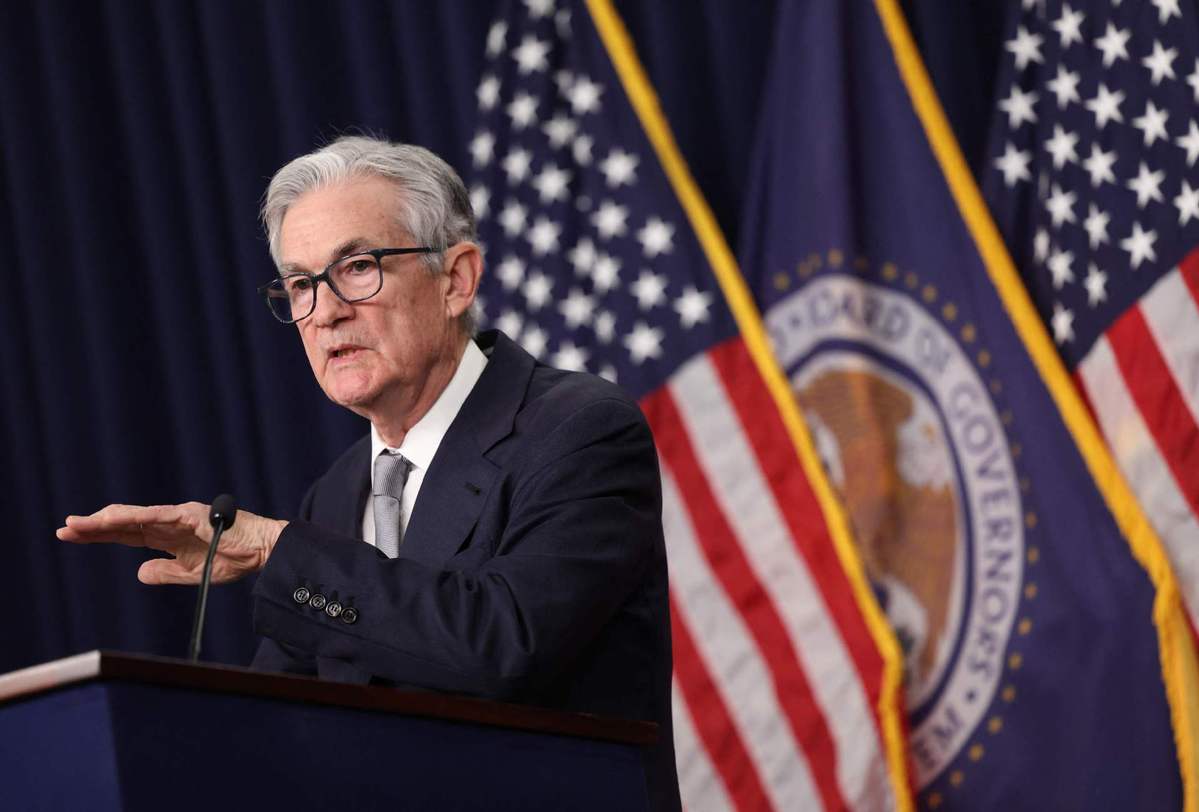With US economy sending mixed signals, Fed keeps rates steady
By HENG WEILI in New York | China Daily Global | Updated: 2023-11-02 09:44

While the Federal Reserve looks for a manageable medium between persistent inflation and strong consumer spending, it kept interest rates unchanged on Wednesday,
And two recent economic reports show that the US economy is sending conflicting signs.
Manufacturing contracted sharply in October, likely due to strikes by the United Auto Workers (UAW) union against Detroit's Big Three automakers. The union and the automakers have recently reached a tentative settlement.
The Institute for Supply Management (ISM) said on Wednesday that its manufacturing purchasing managers index (PMI) dropped to 46.7 last month from 49.0 in September, the highest reading since November 2022.
It was the 12th consecutive month that the PMI stood below 50 — which indicates a contraction in manufacturing — the longest such stretch since the 2007-09 recession.
The six-week UAW strikes at assembly plants owned by Ford Motor, General Motors and Chrysler parent Stellantis disrupted supply chains and forced automakers to furlough and lay off thousands of non-striking workers. The tentative contract agreements could lead to the PMI rebounding in November.
The US government reported last week that there were at least 30,000 UAW members on strike when it surveyed business establishments for October's employment report.
And although manufacturing, which accounts for 11.1 percent of the economy, is struggling with higher borrowing costs, the PMI likely exaggerates industry weakness. Fed data showed production of long-lasting manufactured goods rising briskly in the third quarter.
The dour PMI report followed last week's solid third-quarter GDP report, which showed that the economy expanded at a 4.9 percent annual rate from July through September.
American consumers — defying rising prices, steeper interest rates and talk of a recession — continued to spend.
"We have what looks like a soft landing, with very good outcomes for the US economy," Treasury Secretary Janet Yellen said last week at a meeting in Bloomberg's Washington office.
The Commerce Department said the economy grew in the third quarter at the fastest pace in nearly two years — more than twice the 2.1 percent annual rate of the second quarter.
The GDP report released on Oct 26 also showed that consumers ramped up their spending on everything from automobiles to restaurant meals. And while the sticky inflation of the past two years has soured many people's views of the economy, millions have splurged on vacations, concert tickets and sporting events.
An increase in house and apartment construction also boosted economic growth in the third quarter.
But as mortgage rates approach 8 percent, and sales of existing homes continue to fall, analysts expect housing to eventually weaken the overall economy.
The rate-setting Federal Open Market Committee (FOMC) after its two-day meeting on Wednesday unanimously agreed to leave the benchmark overnight interest rate in the 5.25 percent-5.50 percent range, a 22-year high, where it has been since July.
"The fact that they left rates unchanged for the second time in a row suggests the Fed might leave rates unchanged in December," said Peter Cardillo, chief market economist at Spartan Capital Securities. "And if they do, that means the Fed is done (raising rates)."
Although the central bank didn't lift rates, Federal Reserve Chair Jerome Powell has acknowledged that if the economy keeps growing robustly, the Fed might have to restart increases.
"We are committed to achieving a stance of monetary policy that is sufficiently restrictive to bring inflation sustainably down to 2 percent over time and to keeping policy restrictive until we are confident that inflation is on a path to that objective," Powell said at a news conference after the Fed meeting.
Yields on longer-dated Treasury securities have climbed by around 1 percentage point since the Fed's last rate increase in July, which may have provided some cover for the bank to keep rates steady.
"That the bond market is delivering the tightening the Fed wants means the Fed can be a bit more cautious," Shamik Dhar, chief economist at BNY Mellon Investment Management, told The Wall Street Journal.
Several factors have helped propel consumer spending. Average pay has outpaced price increases. Many Americans also began the year on healthy financial footing, according to a report last week from the Fed. The net worth of a typical household jumped 37 percent from 2019 through 2022. Home prices catapulted, and the stock market roared back.
Consumers also are spending more of their savings, which could eventually weigh on growth. Many people, particularly lower- and middle-income Americans, are using credit cards more, which carry much higher interest rates after the Fed's long series of rate increases from March 2022 to July 2023.
"My colleagues and I are acutely aware that high inflation imposes significant hardship as it erodes purchasing power, especially for those least able to meet the higher costs of essentials like food, housing and transportation," Powell said.
The average credit card interest rate last week was 27.8 percent, according to Forbes Advisor's weekly report.
Americans saved just 3.8 percent of their income last quarter, down from 5.2 percent in the April-June quarter and notably below pre-pandemic levels.
Agencies contributed to this story.
























